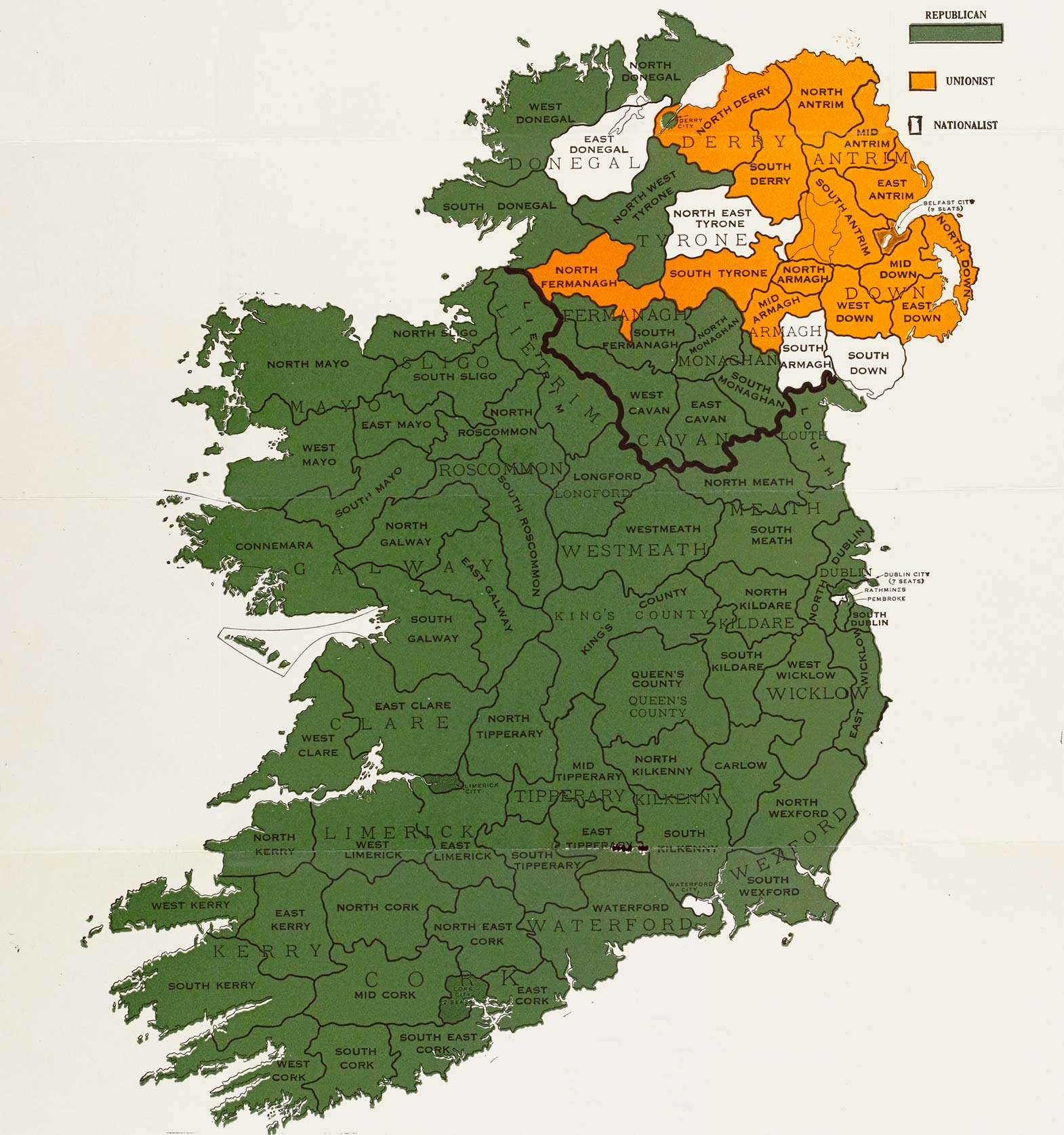Election results in: Irish voters favour an independent republic
Belfast, 30 December 1918 - Ireland has voted – and the result, while not surprising, is sensational.
The Irish Parliamentary Party, the political standard-bearers for Irish nationalism for almost half a century, has been all but destroyed.
The party of Butt, Parnell and Redmond and has been reduced to just seven MPs (one of these in Britain) under the leadership of John Dillon, a veteran of the constitutional movement, who himself was unseated in the constituency of East Mayo.
Prof. Paul Bew talks to RTÉ's David McCullagh about the division in Irish politics revealed by the 1918 general election
Mr Dillon was ousted by Éamon de Valera, currently imprisoned in Lincoln jail, whose Sinn Féin party now claims 73 seats in a Westminster parliament it has vowed to never attend.
The final breakdown of the 105 Irish seats is as follows:
• Sinn Féin 73
• Irish Party 6
• Unionists 26
The victory of Sinn Féin was no surprise. Pre-election retirements from the Irish Party and a failure to replace them with new candidates meant that 25 of the seats claimed yesterday were unopposed.
However, where contests between Sinn Féin and the Irish Party did take place, the swing towards separatist sentiment was undeniable.
Given the general trend, it was the few successes of the Irish Party that stand out. In Belfast Joseph Devlin held off the challenge of Éamon de Valera, who won two of the three constituencies he contested. The only constituency outside Ulster in which the IPP prevailed over a Sinn Féin candidate was Waterford City, where Captain William Redmond, son of the late party leader, defeated Dr Vincent White. With over 9,000 votes cast, Capt. Redmond had just 484 to spare.
In a telegram from Belfast, Mr Devlin told Capt. Redmond that the result in Waterford City had been a ‘vindication of your father’s memory and principles for which he fought and died’.
After the results were announced, there was some trouble in Waterford when supporters of Redmond held a torchlight procession and attended a meeting at which the returned MP addressed them. However, in the course of the procession, windows of Sinn Féin supporters were broken and an effigy of Dr White was burned.
The other four seats won by the Irish Party were in Ulster constituencies where a pre-election pact had been brokered by Cardinal Logue to avoid a split national vote where seats might fall to unionism.
Overall, unionists won 26 seats, almost all in the north-east corner of the country.
The count of the nine Belfast divisions began at noon on 28 December at City Hall, where a large staff under the direction of the High Sheriff, R.M. Gaffikin, and the Under Sheriff, James Quail, worked their way through the counting of ballot papers.
Most of the candidates were also in attendance, but a notable absentee was Sir Edward Carson who, owing to a severe cold, remained at the home of Sir Thomas and Lady Dixon in Larne.
If his absence was source of disappointment to those unionists gathered at the count centre, the results from Belfast were not. In the constituency of Duncairn, Carson stormed to victory with a majority of more than 9,000 votes.
The election result shows that Ireland is as polarised now as it was on the eve of the war, if not more so. A strengthened unionism and an emboldened Irish republicanism have emerged from this historic election - and the aspirations of the two are antagonistic.
[Editor's note: This is an article from Century Ireland, a fortnightly online newspaper, written from the perspective of a journalist 100 years ago, based on news reports of the time.]





















